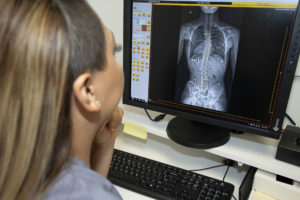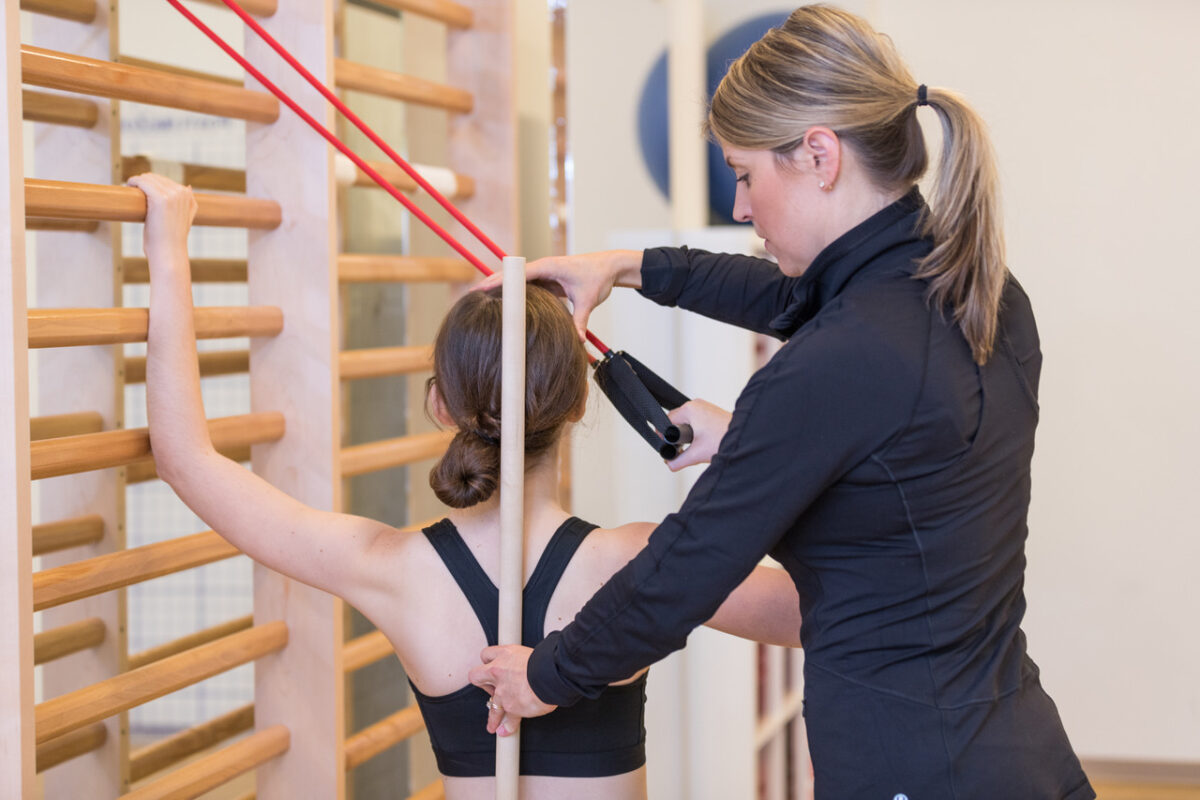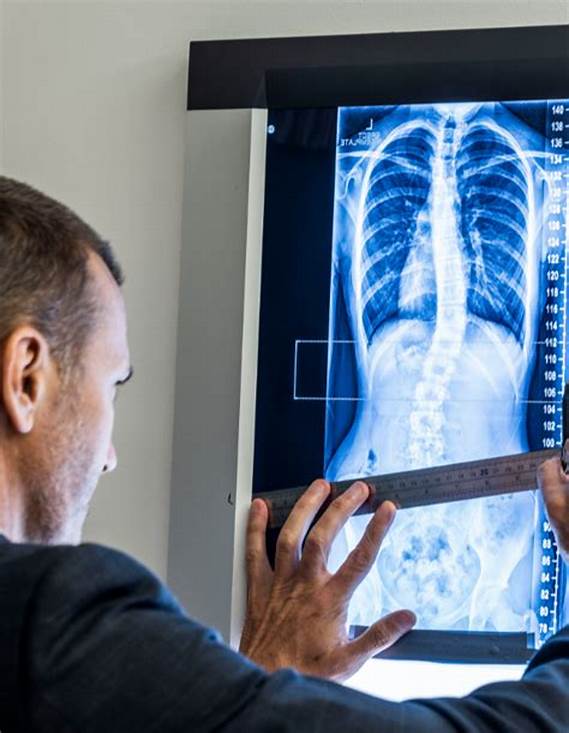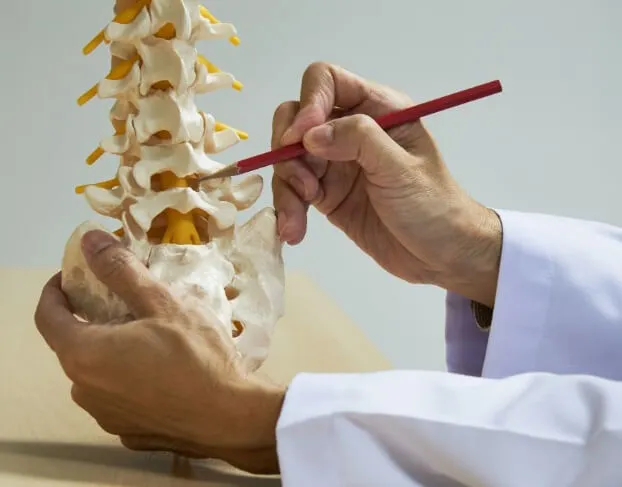胸腰椎は、胸椎と腰椎の間に位置する脊柱の重要な部分で、12個の胸椎と5個の腰椎からなる。体重を支え、脊髄と神経根を保護すると同時に、さまざまな複雑な動きや姿勢に柔軟に対応する重要な役割を担っている。この部位の椎骨は、椎体、椎弓、椎間孔などの構造で構成され、これらが一体となって安定しながらも柔軟なユニットを形成している。この構造により、身体はバランスを保ち、日常生活を営むことができる。

一般的な胸腰椎の問題と症状
胸腰椎の問題は、重大な不快感や合併症を引き起こす可能性があります。一般的な症状は以下の通り:
1.脊柱側湾症
背骨が横に湾曲する脊柱側弯症は、胸腰部のアンバランスや変形を引き起こし、痛みや運動能力の低下につながります。
2.椎間板ヘルニア
椎間板ヘルニアは、椎間板の内側の柔らかい部分が外側の層からはみ出し、近くの神経を圧迫することで起こります。これは、局所的または放散的な痛み、こわばり、運動障害を引き起こします。
3.脊柱管狭窄症
脊柱管が狭くなることで、神経が圧迫され、痛みやしびれ、歩行困難などを引き起こす。
これらの疾患は、背中の痛み、こわばり、運動制限などの症状を引き起こし、ひどい場合には日常生活や生活の質全体に大きな障害をもたらす。
胸腰椎疾患の診断と評価
胸腰椎疾患の診断にはいくつかのステップがある:
A.患者の病歴と症状分析
医師は患者の症状について、痛みの場所、程度、持続時間などの詳細な情報を収集する。
B.身体検査
徹底的な身体検査では、脊椎の姿勢、可動性、神経学的機能を評価し、異常を発見する。
C.画像研究
X線、CTスキャン、MRIなどの画像診断技術により、脊髄の構造や機能に関する詳細な情報が得られ、診断の確定に役立ちます。

D.評価基準
医師は、疼痛スケール、脊椎姿勢測定、神経学的評価など、標準化された基準を用いて症状の重症度を評価する。
胸腰椎治療法
胸腰椎の問題に対する治療は、症状の重症度や患者固有の要因によって異なる。
A.理学療法
理学療法は治療の要であり、マッサージ、温冷療法、牽引、エクササイズなどのテクニックを用いて、血行を改善し、筋肉の緊張を和らげ、脊椎の柔軟性を高める。
B.薬物療法
鎮痛薬、非ステロイド性抗炎症薬、筋弛緩薬などの薬は、痛みや炎症を抑えるために一般的に処方されます。これらの薬は痛みを和らげますが、副作用の可能性があるため、医師の管理下で使用する必要があります。
C.外科的治療
手術は重症例や保存的治療が無効な場合に考慮される。一般的な手術方法には以下のようなものがある:
- 椎間板切除術: 椎間板ヘルニアを除去して神経の圧迫を和らげる。
- 脊椎固定術: 隣接する椎骨を癒合させることで脊椎を安定させる。
- 椎弓切除術: 神経の圧迫を緩和するために椎骨の一部を取り除く。
それぞれの治療法には利点とリスクがある。患者さんはこれらの選択肢について医療従事者と十分に話し合い、最善の方針を決定する必要があります。
胸腰椎のリハビリテーションと予防
A.リハビリテーション戦略
リハビリテーションは、脊髄機能を回復させ、症状を軽減し、患者の生活の質を向上させることに重点を置く。一般的なアプローチには以下が含まれる:
- 理学療法: 筋肉を強化し、柔軟性を高め、姿勢を正すためのオーダーメイドのエクササイズ。
- 心理的リハビリテーション: カウンセリングと行動療法を通して、慢性疼痛の感情的影響に対処する。

B.予防措置
健康な背骨を維持するには、良い姿勢、定期的な運動、長時間の静止姿勢を避けることが大切です。定期的な検診と早期介入により、脊椎疾患の進行を防ぐことができます。
Forethought Medical社の胸腰椎スクリーニング装置と技術
Forethought Medical社は、胸腰椎の問題を診断・評価するための最先端のスクリーニング技術を提供している。同社の装置は高度な画像技術とAIアルゴリズムを活用し、高精度の評価を提供する。主な技術は以下の通り:
A.イメージング技術
デジタルX線、CTスキャン、MRIシステムにより、脊椎の構造や異常の有無を詳細に見ることができる。

B.高度なスクリーニングツール
また、総合的な評価のために、神経筋電気刺激、疼痛評価システム、運動機能評価システムなどの革新的な技術も提供している。
C.臨床応用
Forethought社の技術は、あらゆる年齢の患者に適した正確で非侵襲的な評価を提供する。同社の装置は、迅速で効率的な診断のために設計されており、タイムリーな治療を可能にし、患者の転帰を改善する。
参考文献
- Smith, J., & Miller, A. "Advancements in Thoracolumbar Spine Surgery". 脊椎疾患ジャーナル.2023;34(2):112-118: 10.1016/j.jspd.2023.03.002.
- フォアソート・メディカル"最先端の胸腰部スクリーニング技術" フォーソート・メディカル・ウェブサイト.2024年8月アクセス。 http://forethoughtmed.com.
- Williams, R., & Thompson, E. "The Role of Physical Therapy in Thoracolumbar Spine Rehabilitation(胸腰椎リハビリテーションにおける理学療法の役割)". 臨床整形外科ジャーナル.2022;49(6):256-262: 10.1097/COJ.0000000000003456.
- Davis, H., & Kim, S. "The Efficacy of Non-Surgical Treatments for Spinal Stenosis". 今日の脊椎健康.2023;58(9):204-211: 10.1002/spht.65432.
- フォアソート・メディカル"現代における革新的な脊椎健康ソリューション" 医療ブログ.2024年8月アクセス。 http://forethoughtmed.com/blog.

